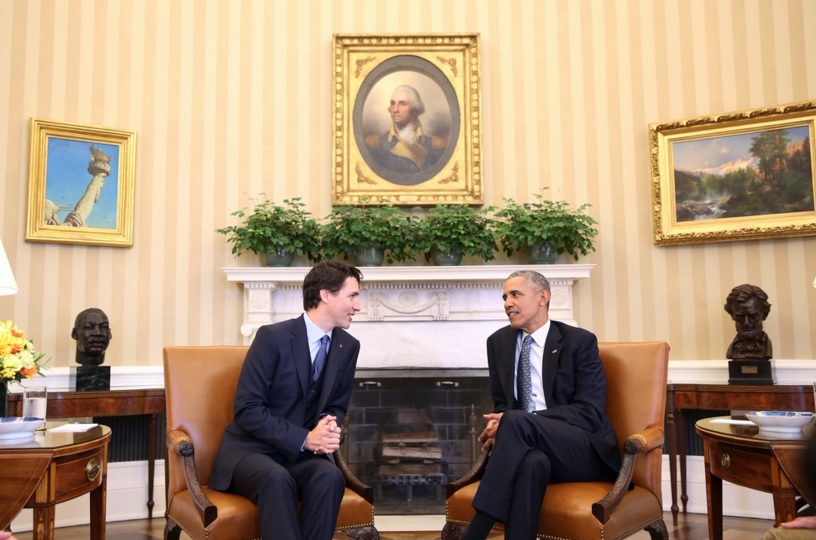Canada News
Trudeau and Obama agree in cuts: Five things to know about methane and HFCs

Prime Minister Justin Trudeau (left) speaks with US President Barack Obama (right) at the White House during the Prime Minister’s state visit to the United States.
(Photo: Canadian PM | Twitter)
OTTAWA—Prime Minister Justin Trudeau and U.S. President Barack Obama announced a commitment Thursday to reduce methane emissions from the oil and gas sector by 40 to 45 per cent below 2012 levels by 2025.
Here’s five things to know:
Methane and hydrofluorocarbons (HFCs) are among a group known as “short-lived climate pollutants” because they have lifespans in the atmosphere of less than 15 years. Carbon dioxide, by contrast, remains in the atmosphere far longer, with up to 60 per cent of emissions still in the atmosphere after 100 years and up to 25 per cent still in the atmosphere after 1,000 years.
Methane is a naturally emitted greenhouse gas that is 20 times more potent than carbon dioxide as a climate warming agent. While it emanates from animals and from decomposing plants, 60 per cent of the methane in the world’s atmosphere comes from human sources, including natural gas and oil production, coal mines and landfills.
The U.S. Environmental Protection Agency will start developing regulations for methane emissions from existing oil and gas sources immediately. Environment and Climate Change Canada says it will consult with provinces and territories, indigenous peoples and other stakeholders with the intention of publishing “an initial phase of proposed regulations” by early next year.
The U.S. and Canada both say they’ll propose new measures on HFCs this year. HFCs are used in air conditioning and refrigeration as well as foaming agents, aerosols and solvents. They currently account for less than one per cent of total greenhouse gases. However, like other short-lived pollutants, hydrofluorocarbons have a much greater warming impact than carbon dioxide, and the use of HFCs is growing eight per cent a year as global demand for air conditioning increases.
In 2012, Canada joined Bangladesh, Ghana, Mexico, Sweden, the United States and the United Nations Environment Programme in the Climate and Clean Air Coalition, a voluntary group aimed at reducing short-lived pollutants. At the time it was estimated that, if left unchecked, short-term climate pollutants would contribute about half of the climate-warming effect from man-made emissions over the next two decades.





















